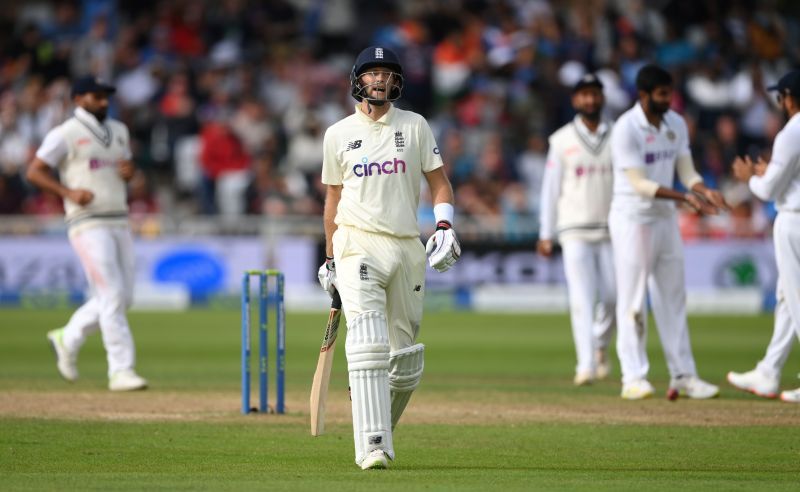
England's batting unit looks an accident waiting to happen
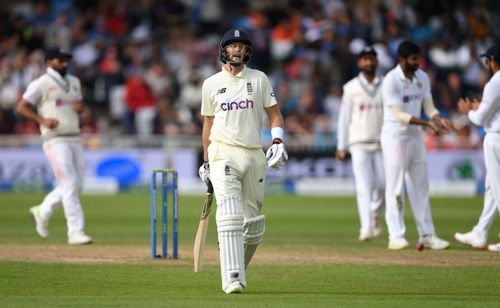
A couple of years ago at Headingley, England spiraled to arguably their lowest ebb in Test cricket when Australia skittled them out for 67. It handed the Aussies a 112-run lead, which quickly swelled to 358 as the visitors posted 246 in their second innings.
Hence, at that point, it felt that Australia would trample England for the second time in the series and establish an unassailable lead in the Ashes. Yet, in the next few hours, one Ben Stokes ensured that England pulled an extraordinary victory out of the fire.
Not only did the Englishman craft one of the greatest Test centuries of all time, he did so while running out of partners at the other end. Immediately, it seemed that England, courtesy of that knock, had turned a corner and that the 67 all-out, which rather remarkably, had taken place in that very game, would remain a glorious aberration of their batting credentials.
Unfortunately, over the past couple of years, essays such as the one Stokes produced have been the deviation from what has become a recurring theme. And despite several of England’s current batting unit seemingly enjoyed a watershed series in South Africa in 2019-20, there remain several flaws that need to be ironed out.
Since the start of 2021, England have played three completed Test series, away to India and Sri Lanka and at home against New Zealand. On both overseas tours, they were confronted with pitches that spun viciously and put their batters to the test. Against the Islanders, the surfaces weren’t as conducive to spin, meaning that Joe Root in particular thoroughly enjoyed himself.
In India, though, post the 1st Test, the runs dried up for Root – something that exposed the frailties in England’s batting unit. They huffed, puffed and scrapped for every run but were never able to establish a foothold in the game. Inevitably, they crumbled and quite spectacularly at that.
Against New Zealand, the tracks seemed a touch more batter-friendly. However, England somehow managed to produce one of their characteristic collapses in the 2nd innings of the 2nd Test to hand the Kiwis the series.
Thus, it has become increasingly clear that the conditions haven’t mattered to England’s batters as much. Instead, they’ve just found ways to incessantly produce insipid displays – a trend that continued at Trent Bridge against India too.
For large swathes of the encounter, England were on the back foot, despite having won the toss and having elected to bat first. On the first day itself, they were blown away by India’s irresistible bowling line up. Though the visitors were pretty good, there were quite a few elementary mistakes on England’s part – errors that get magnified in Test cricket.
Second time out, the hosts were staring at a similar barrel, with Jasprit Bumrah and Mohammed Siraj having reduced them to 46/2 when trying to erase a 95-run first innings deficit. Thankfully for England, Root imposed himself on the fixture and ensured that they restored some sort of parity.
But apart from Root, there was barely anything of note. While the likes of Dan Lawrence, Jonny Bairstow, Jos Buttler and Sam Curran played cameos, it certainly wasn’t enough to post a daunting total on the board.
England's batters have been poor in Test cricket in 2021
Speaking of this particular pattern of English batters not scoring runs, well, it has scaled greater depths in 2021. As things stand, only Root has accumulated more than 500 runs (1064 to be precise) in the calendar year. No batter not named Root has even crossed the 360-run mark – something that is a damning indictment of England’s struggles with the willow.
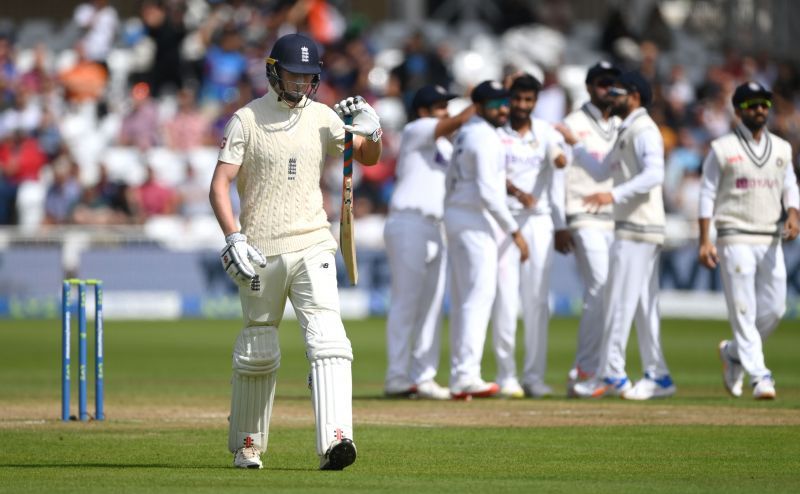
Additionally, their top order, which comprises of Dom Sibley, Rory Burns and Zak Crawley haven’t been able to lay the foundation expected of them. Burns (barring the series against New Zealand) and Sibley have often spent a lot of time at the crease but have not moved the game forward, meaning that Root has always walked into a cauldron of pressure.
Furthermore, Burns and Sibley don’t come across as cricketers who can be bona-fide match-winners for England, thus, making their string of low scores even more problematic. As crude as it may sound, they aren’t game changers and there is no certainty that when they score runs England will benefit to such an extent that victory is assured.
Crawley, meanwhile, is slightly different, for he has the ability to take the game away from the opposition. A tally of 156 runs at an average of 11.14 in Tests in 2021 though, tells another story altogether.
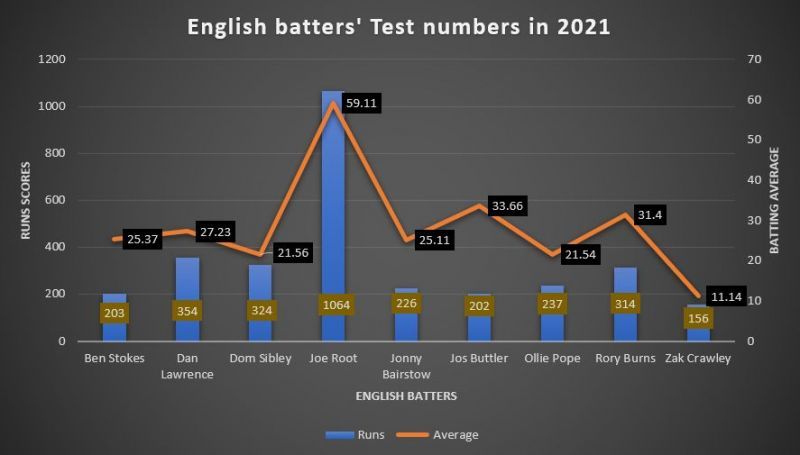
The problem, however, is that the aforementioned, owing to their firebrand approaches, might not be as consistent. Under good circumstances, these batters are a luxury any team would love to have. In England’s current scenario though, their intermittent run-scoring becomes an issue because, well, they are expected to score all of them.
Unwittingly, the entire burden transfers onto Root, who, simply put, can also have off-days. On quite a few occasions, these days happen post the 1st match of the series – an element that England might be wary of.
To place things into context, the English Test captain averages 57.40 in the opening fixture, whereas his averages drop a touch a game later. In the 3rd and the 4th match, though, there is a significant discrepancy. Moreover, in the first game of a series, Root scores a lot quicker, meaning that he sets up the tempo and impacts the game almost instantly.
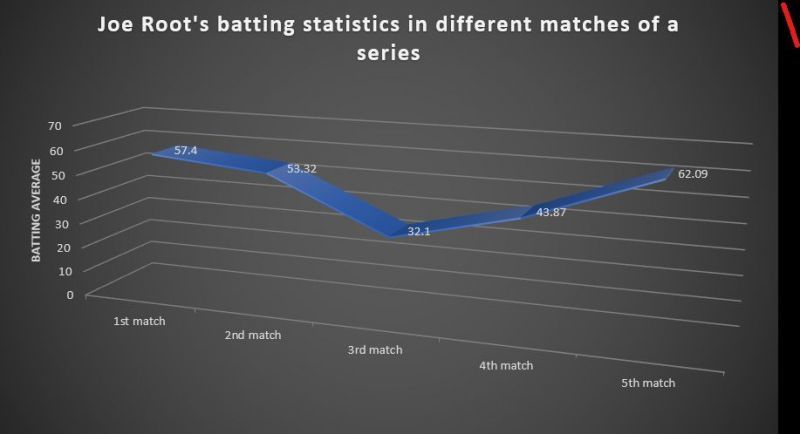
History then preaches that England have a grand total of one more game to fix their batting woes because when Root is on song, all is well for England. When he isn’t, which is more likely to happen after the contest at Lord’s, that might not be the case.
From a broader perspective, maybe an introspection into the current county system and how it nurtures young batters is warranted. For now, though, England simply need to find answers swiftly.
India have been vocal in wanting to play bowlers who can bat to protect their illustrious but misfiring middle order. England, on the other hand, have opted to include batters who are either too raw for Test cricket, seeking their second (or even third) renaissance or batters who have just not scored the requisite number of runs in the format.
That, though, is hardly a recipe for success, considering the team's balance often gets altered and there is a tendency to skew it towards the batting unit – something that has unfortunately not guaranteed the returns England would’ve been hoping for.
Back in August 2019, England could fall back on Stokes and at Trent Bridge this summer, Root stamped his authority and masked several shortcomings. However, it isn’t a ploy that might be feasible throughout a series against a side such as India.
Not just because Stokes is not part of the team altogether, but also because Root, especially in such helpful bowling conditions, will also stop scoring at some point. At that juncture, it seems that England would have to scurry for cover and dig deep into the batting reserves they think they have but reserves that have yet to come to the fore consistently enough.
Till then, it seems that this England batting unit is an accident waiting to happen. And if one were to point towards their score of 181 in the first innings at Trent Bridge and say that a mishap has already occurred, England have shown that it could well be just the tip of the iceberg.